Mold in apple cores is a common yet potentially harmful issue that many people may encounter. In this informative piece, we will explore the causes and conditions that lead to mold growth in apples, the various types of mold that can develop, and how to prevent and deal with this problem.
Formation of mold in apples
Mold formation in apples is generally caused by fungal spores that thrive in warm, damp environments. The apple core is particularly susceptible to mold growth as it contains the seeds that can retain moisture from the fruit’s natural juiciness. When apples are stored improperly or exposed to moisture for prolonged periods, mold can develop and penetrate through the skin, eventually reaching the core. Furthermore, bruised or damaged apples are more susceptible to mold growth as they provide a point of entry for spores, leading to quicker contamination of the core.
There are various types of mold that can develop in apple cores such as Penicillium expansum, which causes a disease known as blue mold or soft rot. This is one of the most widespread and damaging types of mold that infects apples both pre- and post-harvest. Another common type of mold found in apple cores is Mucor piriformis, causing a condition known as mucor rot. These molds can lead to significant spoilage of the fruit and should be eliminated early on to prevent accumulation of harmful toxins like mycotoxins.
To prevent mold growth in apple cores, it is important to take certain measures during storage and handling. Apples should be kept in cool, dry environments with low humidity, such as a refrigerator, where fungal spores have difficulty thriving. Furthermore, storing apples in sealed containers or bags can help prevent mold development as it protects the fruit from the outside environment.
Regularly inspecting stored apples for signs of spoilage or mold is crucial in preventing further spread throughout the batch. It is vital to discard any apples that show mold, as consuming moldy fruit can lead to health issues, especially for individuals with compromised immune systems or allergies to mold spores.
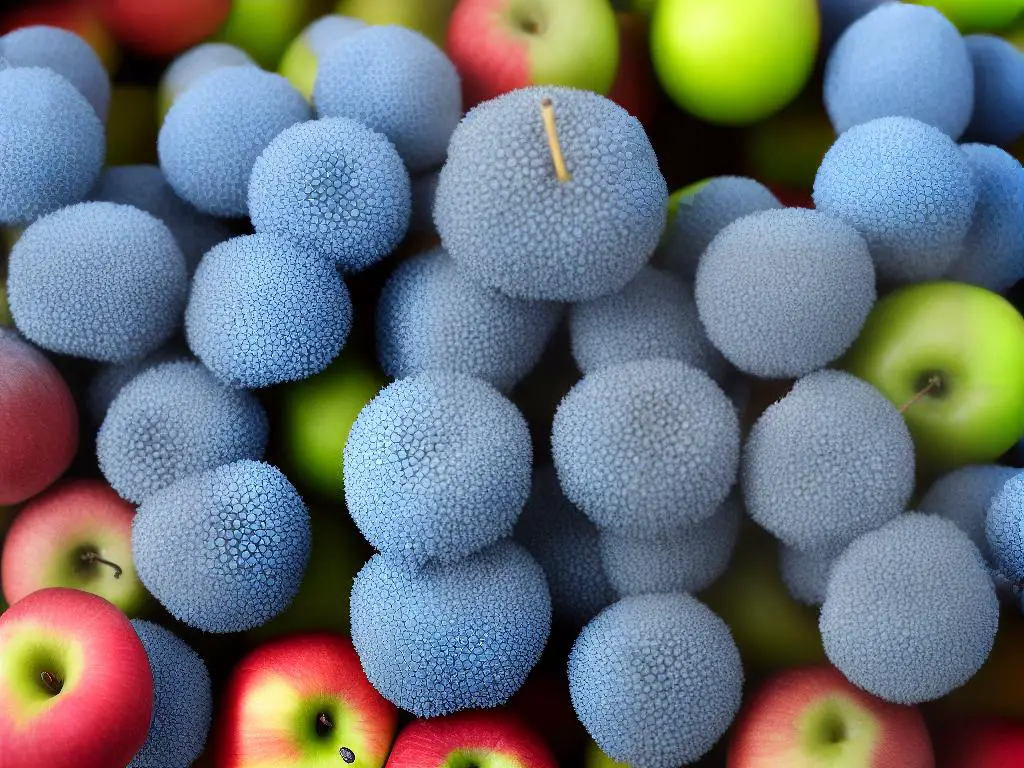
Signs and types of mold
Several factors contribute to mold in apple cores, such as prolonged exposure to damp environments, improper storage, and the apple’s natural decay process. Some common mold types found in apple cores include Penicillium, Aspergillus, and Cladosporium. These molds each exhibit distinct characteristics in their visual appearance and smell, which can help identify them. Recognizing these signs is essential in avoiding potential negative health effects from consuming mold-contaminated apples.
Penicillium mold is known for its blue or green appearance and can often be seen as fuzzy or cotton-like growths on the apple core. This type of mold is associated with the production of penicillin, an antibiotic that has numerous health benefits. However, consumption of moldy apples can still lead to negative health effects, such as allergic reactions or respiratory issues. Aspergillus mold, on the other hand, typically appears as yellow, green, or black spots on the apple core. This type of mold can produce harmful mycotoxins that can lead to severe health issues, especially if consumed in large quantities. Aspergillus mold can also emit a musty odor, which is another indicator of its presence.
Mold, such as Cladosporium and Aspergillus, can sometimes be found in apple cores. Cladosporium mold is characterized by its black or dark green appearance, often appearing as tiny specks or dots. Though it is generally considered to be less harmful compared to Aspergillus, it can still cause health issues, especially for individuals with compromised immune systems or pre-existing mold allergies. In addition to the visual signs and distinct smells associated with these molds, natural changes in the apple’s texture and consistency – such as excessive softness or a wrinkled appearance – can also be indicators of mold growth. Being able to identify and avoid consuming moldy apple cores is crucial in maintaining good health and avoiding potential health complications.
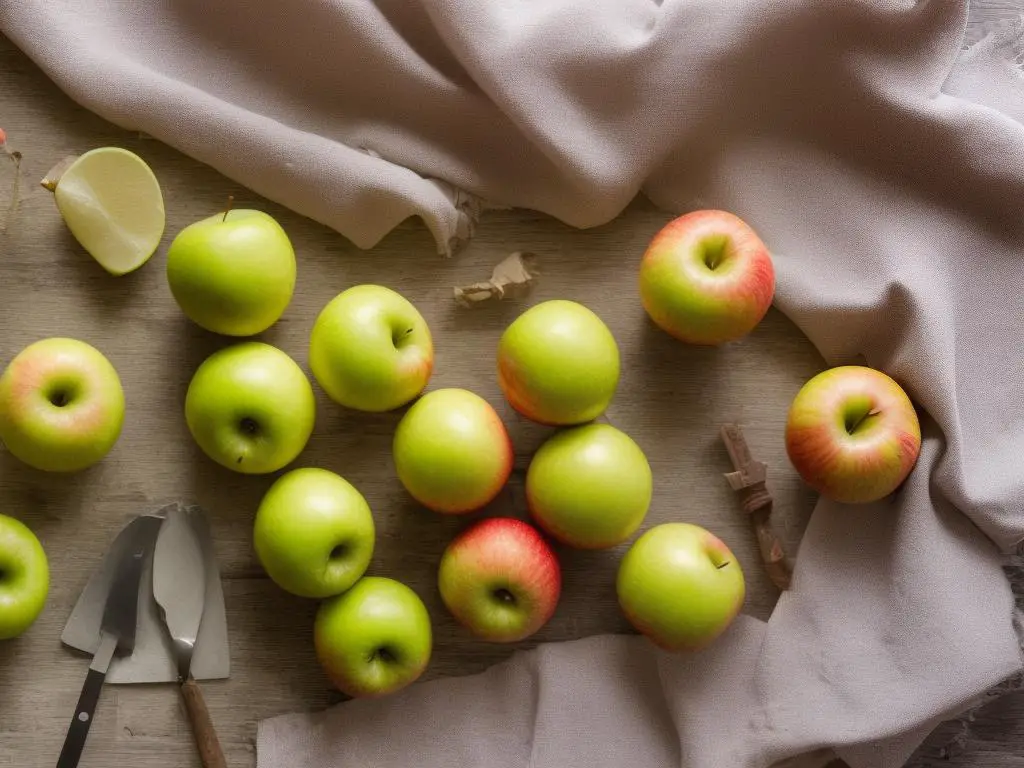
Health effects of consuming moldy apples
Mold in apple cores poses various health risks, primarily due to the presence of mycotoxins, which are toxic compounds produced by certain types of mold. While eating a small amount of moldy apple is unlikely to result in severe consequences, consuming such apples regularly or in large quantities can lead to mycotoxin exposure. These harmful compounds have been linked to a variety of health issues including weakened immune systems, digestive problems, and even cancer in some cases. Consequently, it is essential to be vigilant about avoiding moldy apple cores and prioritize maintaining a healthy diet.
In addition to mycotoxin exposure, consuming moldy apples can trigger allergic reactions and respiratory problems in susceptible individuals. Mold spores can cause nasal congestion, sneezing, eye irritation, and coughing when ingested or inhaled. For those with mold allergies or asthma, the reaction could be more severe, leading to difficulty breathing or anaphylaxis. Furthermore, the presence of a mold called Penicillium is known to be a common cause of fruit allergies. Thus, being aware of the symptoms and risks associated with mold exposure is crucial for protecting your health when handling and consuming apples.Pregnant women, children, and individuals with weak immune systems are at an elevated risk for experiencing health issues related to moldy apples. In particular, a mycotoxin called patulin, often found in apples, has been shown to be toxic to developing fetuses and can cause birth defects. Regular consumption of moldy apples may also contribute to an increased risk of foodborne illness, as they can contain other harmful bacteria like E. coli or Salmonella. In conclusion, it is of utmost importance to inspect apples carefully and discard any that show visible signs of mold to prevent unnecessary health complications caused by mold ingestion.
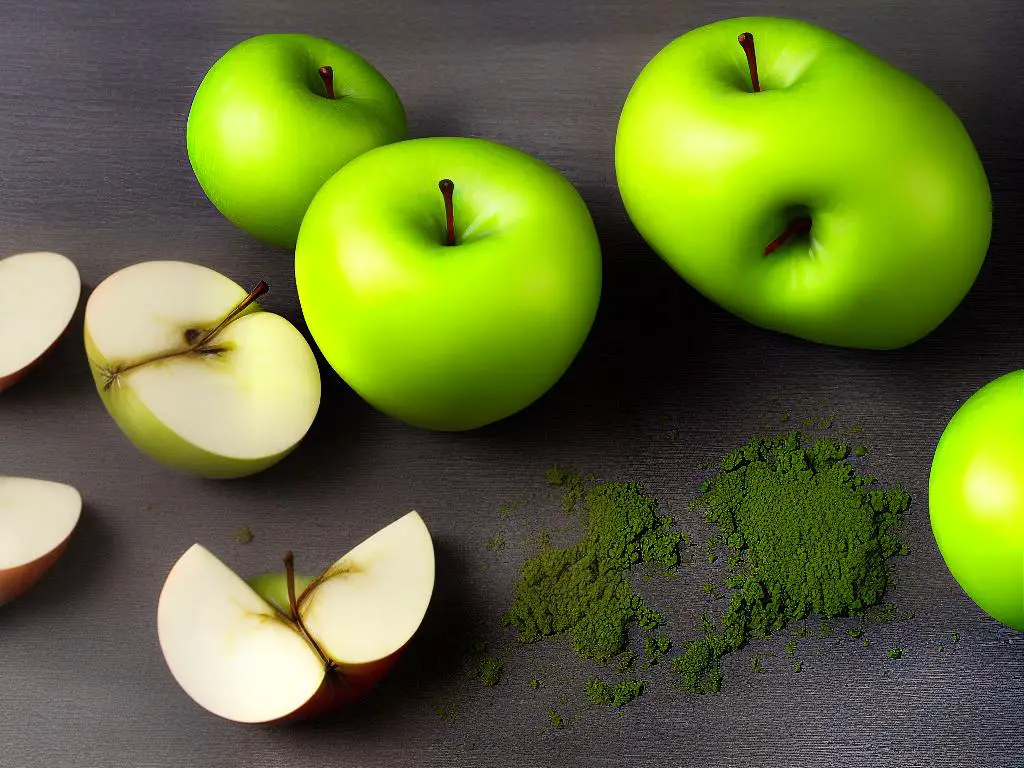
Preventing mold growth in apples
Proper storage and handling of apples are crucial for preventing mold growth, which can occur in apple cores if they are exposed to the right conditions. One of the best ways to minimize mold growth in apples is to store them in a cool, dry place, such as a pantry or fridge. When storing apples in the refrigerator, place them in the crisper drawer away from other fruits and vegetables. This will help maintain the fruit’s freshness and reduce exposure to moisture and other contaminants that can encourage mold growth. By taking these precautions, it becomes easier to avoid the potential health risks associated with consuming moldy apples and ensure that apple consumption remains a safe and enjoyable experience.
Another essential measure to prevent mold in apple cores is to handle apples with clean hands and utensils. Wash apples thoroughly with running water before cutting or eating them, and always use a clean knife and cutting board to minimize the risk of contamination. Furthermore, always remove and discard any damaged or moldy parts, as mold can quickly spread from one part of the fruit to another. Be sure to avoid consuming moldy apple cores, as they can cause allergic reactions and respiratory issues in some individuals.
Proper storage and handling of apples is essential to maintain their freshness and prevent mold growth. Regularly checking your apples for any signs of mold, especially in the apple core, can help ensure their quality and safety. If you notice mold in an apple core, immediately discard the affected apple and inspect the other apples for any signs of mold. Mold can spread quickly, so swift action is crucial to prevent further contamination. By regularly monitoring your stored apples and removing any that show signs of mold or spoilage, you can help keep your apples fresh and mold-free.
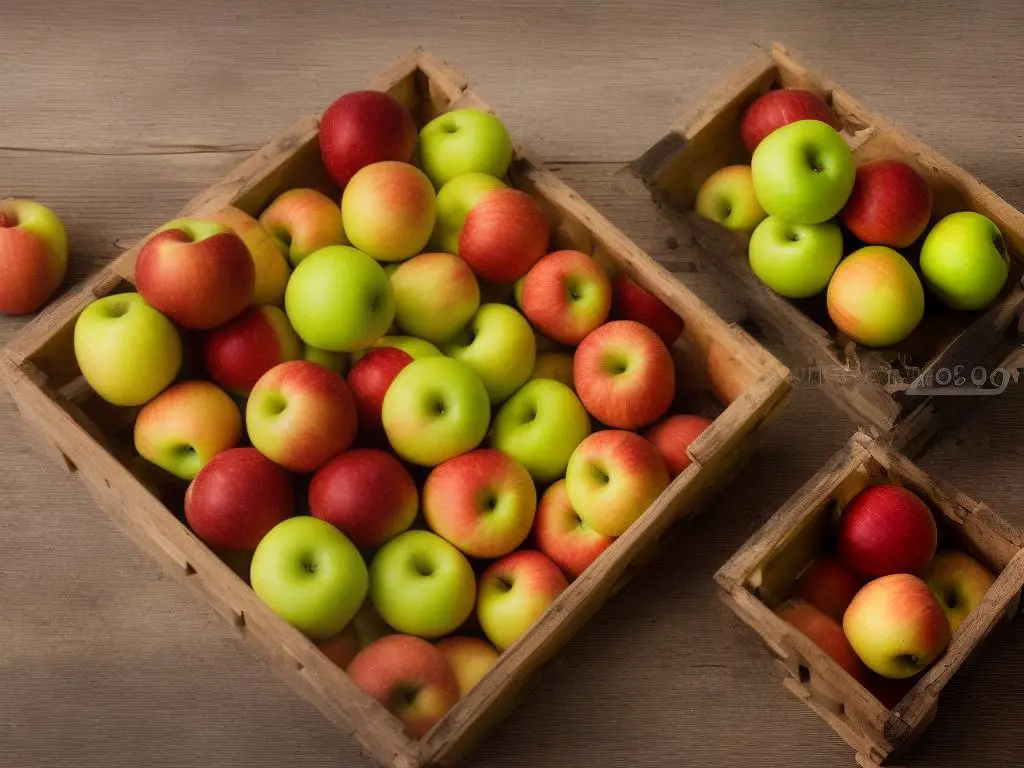
Safely disposing of moldy apples
When you spot a moldy apple, it is important to dispose of it safely to prevent the mold from spreading to other food items or surfaces in your home. To do this, place the apple in a plastic bag, seal the bag tightly, and then place it in your household trash bin. Ensure that you also check any fruits or vegetables that might have come into contact with the moldy apple for any signs of mold growth, and discard them using the same method. By keeping a keen eye on your stored apples and disposing of any moldy ones promptly, you can protect your food and maintain a healthy environment in your home.
After handling moldy apples or other moldy food, it is essential to clean and sanitize the surfaces and any tools that may have been exposed to the mold. Wash your hands thoroughly with warm soapy water for at least 20 seconds. Then, clean and sanitize cutting boards or countertops by using a solution of one tablespoon of bleach mixed into one gallon of water. Allow the surface to air-dry after applying the sanitizing solution, as this will ensure that any lingering mold spores are killed. It is also a good idea to clean the inside of your refrigerator and inspect it for any signs of mold growth, as mold can spread easily within a moist, cool environment.
Taking these precautions when disposing of moldy apples will help prevent mold from spreading throughout your kitchen or contaminating other fruits and vegetables. Additionally, being proactive about checking your produce for mold and maintaining proper storage conditions can help keep your produce fresh and safe to eat. By understanding how mold grows on apples and the dangers it presents, you can take action to limit its presence in your kitchen and safeguard the health of you and your family.
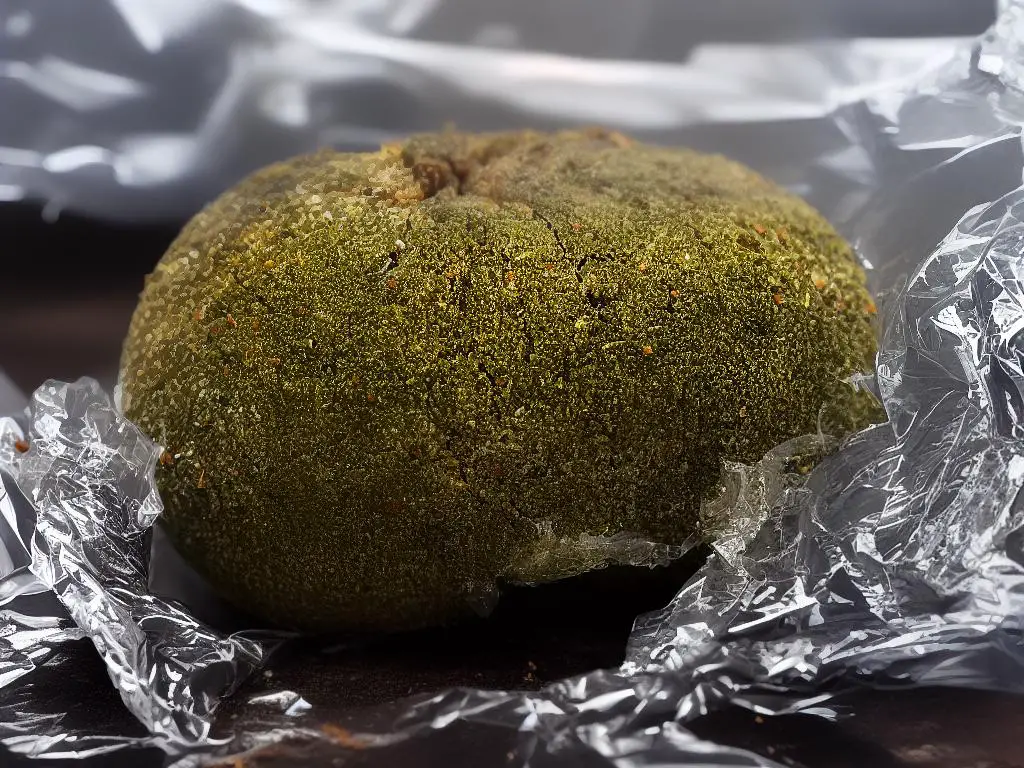
Protecting yourself and your loved ones from the harmful effects of mold in apple cores begins with awareness and understanding of the issue. By learning how to identify the signs of mold, taking necessary precautions to prevent its growth, and knowing how to properly dispose of moldy apples, you can keep your fruit fresh and safe for consumption. Stay informed, remain diligent, and enjoy the healthy benefits of apples without the worry of mold contamination.
